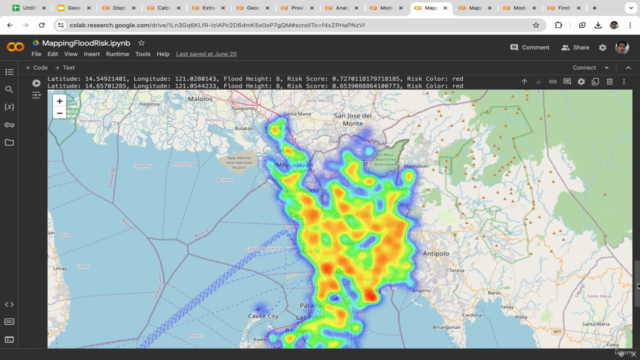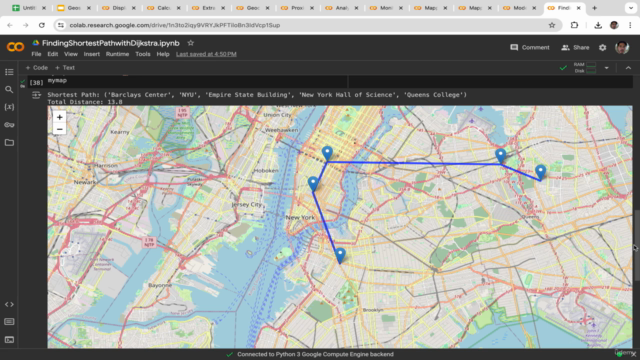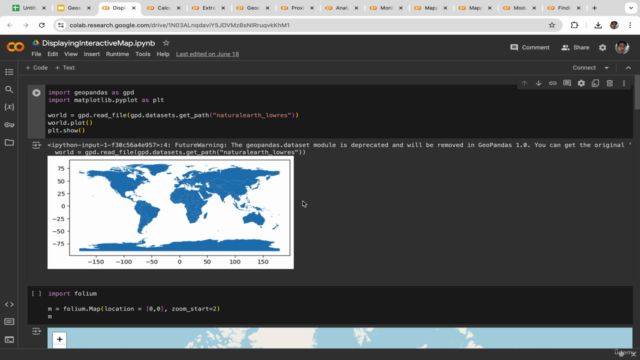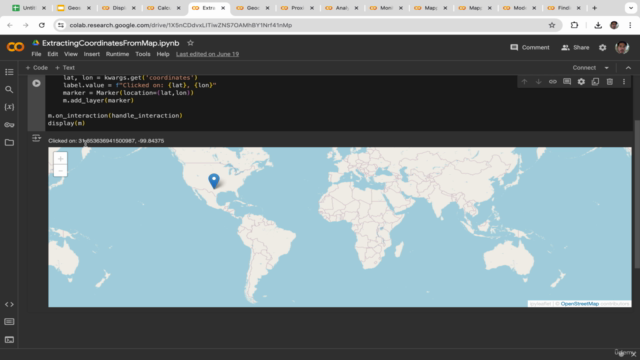GIS & Geospatial Analysis with Python, Geopandas, and Folium

Why take this course?
🌟 Master GIS & Geospatial Analysis with Python, Geopandas, and Folium! 🚀
Course Overview:
GIS & Geospatial Analysis with Python, Geopandas, and Folium is a deep-dive into the world of geographic information systems (GIS) and spatial analysis. This project-based course is designed for individuals looking to enhance their programming skills and gain valuable knowledge in geospatial applications. With a focus on urban planning, this course will take you through a series of practical projects where you'll learn to handle real-world datasets and perform various types of analyses.
What You Will Learn:
Understanding the Basics:
- Geospatial Analysis Fundamentals: We'll start with the foundational concepts, ensuring you grasp what geospatial analysis entails and its various applications.
- Workflow of Geospatial Analysis: Get a comprehensive overview of the entire process, from data collection to modeling.
Visualization Techniques:
- Master choropleth maps, heatmaps, 3D visualizations, flow maps, point maps, and cartograms to present your findings effectively.
Interactive Mapping with Python Libraries:
- Learn to create interactive maps using Geopandas, Folium, and Ipyleaflet.
- Understand how to integrate these libraries to visualize geographic data with ease.
Spatial Data Manipulation Skills:
- Calculate distances between locations.
- Extract coordinates from maps.
- Perform geocoding and reverse geocoding.
- Conduct proximity analysis to locate nearby cities.
Geospatial Analysis Projects:
- Population Density Mapping: Identify densely populated areas to guide urban planning initiatives.
- Air Quality Monitoring: Detect high pollution levels and assess their public health and environmental impact.
- Flood Risk Mapping: Facilitate disaster preparedness by mapping flood-prone areas.
- Snow Cover Mapping: Support transportation planning with insights on snow coverage in different regions.
- Optimizing Transportation Routes: Improve urban commuting efficiency by developing optimal routes, using tools like Open Street Map Network X and Dijkstra's algorithm.
Why This Course?
Geographic Information Systems (GIS) are indispensable for understanding spatial relationships in data. They enable informed decision-making and problem-solving across various fields such as urban planning, environmental science, public health, and beyond. This course will not only teach you the technical skills but also show you how to apply them to create business opportunities and enhance operational efficiency.
Course Breakdown:
Introduction to Geospatial Analysis:
- Get acquainted with the use cases of geospatial analysis.
- Understand the workflow involved in geospatial data projects.
- Learn about the technical challenges and limitations inherent in GIS.
Geospatial Data Visualization:
- Dive into various visualization methods to effectively communicate your findings.
Hands-On Projects:
- Each project is designed to build on the previous one, reinforcing your skills and deepening your understanding of geospatial applications.
Spatial Data Handling:
- From calculating distances to performing complex geocoding tasks, you'll handle spatial data with confidence and proficiency.
Join us on this exciting journey to unlock the power of GIS & Geospatial Analysis! 📡🌍 With this course, you're not just learning a set of skills—you're equipping yourself with tools that will open doors to countless opportunities in the rapidly evolving field of spatial data analysis.
Enroll now and start your journey towards becoming a Geospatial Analysis expert with Python, Geopandas, and Folium! 🗺️🔍✨
Course Gallery




Loading charts...